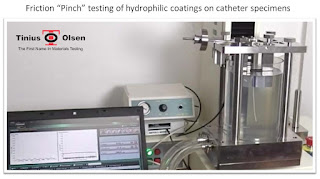Measuring, Monitoring and Proving Your Packaging 24 Hours A Day

The Tinius Olsen Testing Machine Company has been providing materials testing systems to the manufacturing industry for over 135 years, pulling, pushing, squeezing, bursting and twisting packaging materials, enclosures, and packaging devices to accurately quantify strength, performance and quality. Using the data from a Tinius Olsen testing system QC Mangers and their teams are able to monitor, prove and maintain the quality of their products, be it tapes, adhesives, plastic film, metal foil, bottles, enclosures, bags and devices. The key business needs; Efficiency, immediate feedback of test results to the production team and traceability are all met by the new Tinius Olsen automated materials testing platform. The item to be tested is passed automatically into the Testing Cell, then handled by a six axis robot, it can be dimensional checked, loaded into the tensile testing machine and tested. Immediately post-test the Pass/Fail status is reported, and the robot sorts ...


